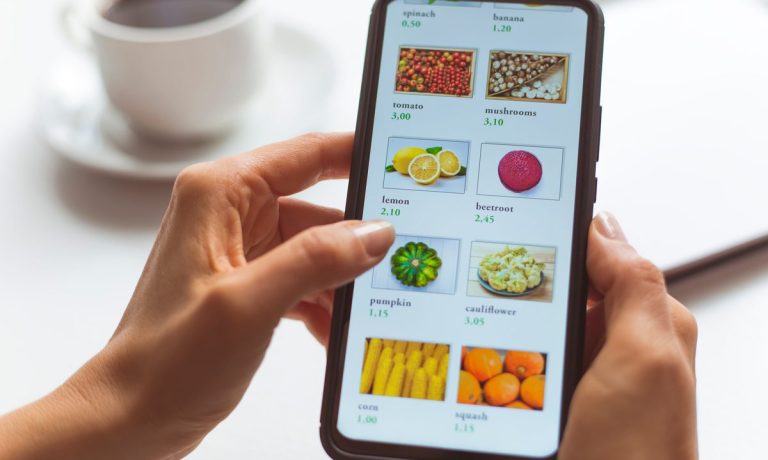
Around the world, grocers are transforming their omnichannel presences to adapt to consumers’ quickly evolving behaviors. As tech companies with products to sell make bold predictions about the future of online grocery shopping, grocers themselves have a unique view of their shoppers’ habits, observing in real time the changing ways that eCommerce and brick-and-mortar are functioning in concert.
“We have been surprised that our customers have continued to increase their purchasing via our eCommerce website and application, even with the economy open and people able to visit stores,” Gal Tsubery, chief information officer at Israeli supermarket chain Tiv Ta’am, which operates 40 locations throughout the country, told PYMNTS in an interview. “I think that over the coming years more customers will order from websites and applications, and I think that the share of online sales will increase to 40% of total sales.”
Additionally, as contagion concerns rise once again with the rapid spread of new variants, grocers have the opportunity to seize on the resultant shift away from restaurants. By highlighting their digital options and contactless in-store technologies, they can drive adoptions much as they were able to in the early months of the outbreak.
Securing the Pandemic Shopper, Literally and Figuratively
Of course, grocers are in a very different place now than they were at the start of the pandemic. Many consumers have grown familiar with the digital options at their disposal in the past 19 months.
In the United States, for instance, 46% of consumers are ordering groceries online more often than they were before the outbreak, according to data from PYMNTS’ study, The Bring-It-to-Me Economy: How Online Marketplaces And Aggregators Drive Omnichannel Commerce, created in collaboration with Carat from Fiserv, which featured a census-balanced survey of more than 5,200 U.S. adults.
Read more: Bring-It-to-Me Economy Ascends as Consumers Embrace Home-Centric Lifestyles
According to data from Tiv Ta’am tech partner stor.ai, the grocer’s revenue from eCommerce grew 250% from 2020 to 2021. In growing its eCommerce business, the grocer has invested not only in making online purchasing options available but also in making them user-friendly and secure.
“Our digital needs have grown since March 2020,” said Tsubery. “We have … expanded our budget to devote more resources to customers’ user experience as well as to … fields such as cybersecurity.”
Investments such as these are especially key amid the proliferation of cyberattacks, as rapid digitization exposes vulnerabilities. Earlier in December, for example, a vulnerability in a widely used open-source software led to 840,000 attacks within four days.
See also: Log4j Vulnerability Causes Nearly 900K Cyberattacks in Four Days
The Changing Role of the Coupon
Tsubery noted that, as the brand has built out its digital offerings, it has been able to leverage deals more effectively.
“We send customers personalized digital coupons based on their previous purchases, and that increases the percentage of the customers actually using their coupons,” he said, adding that the company might, for example, leverage a purchase from a given brand to advertise other products from the same brand.
That sort of personalization is made possible by digital offerings such as loyalty programs that encourage consumers to hand their data to brands in exchange for rewards. In fact, research from PYMNTS’ study What Consumers Expect From Their Grocery Shopping Experiences, created in collaboration with ACI Worldwide, which featured a survey of more than 2,300 U.S. adults, found that 54% of grocery shoppes are members of their favorite grocery stores’ loyalty programs.
See also: Digital Features Can Help Grocers Win Over 43 Percent Of Shoppers
Tsubery’s observations echo those of John Ross, president and CEO of the Independent Grocers Alliance (IGA), who in a recent interview with PYMNTS shared that digital coupons shift the value of these offers to the consumer, where previously their main purpose was to get brands on shelves.
“The reason why the paper coupon exists for a very long time really hasn’t been as much about sell-through as about sell-in,” Ross said, noting that over 99% of paper coupons are not redeemed. “Digital coupons are different 14.5, 15% redemption rates, and they are effective, they’re data-drive, you can target them.”
The Omnichannel Store
Looking ahead, Tsubery predicts that grocery stores that are able to seamlessly meld their digital and physical experiences will have the advantage, specifying that emerging technologies such as smart carts and increasingly user-friendly self-checkout solutions Meanwhile, he guesses that those that hold out will fall behind.
Sure enough, according to data from PYMNTS’ study Today’s Self-Service Shopping Journey: The New Retail Expectation, created in collaboration with Toshiba, which surveyed more than 2,000 U.S. adults about their checkout behaviors, around a third of consumers reported having used self-service options for their most recent grocery purchase, and these consumers were primarily motivated by a desire for speed and a wish to skip waiting in line.
See also: Consumers Want Self-Service Checkout Options But Rarely Get to Use Them
“I think that there are a lot of grocers who are not fully prepared to adopt digital technologies, who base their sales only on offline offerings and who only use manned cash registers,” he said. “In fact, today’s customers prefer grocers that combine digital, online and offline methods.”